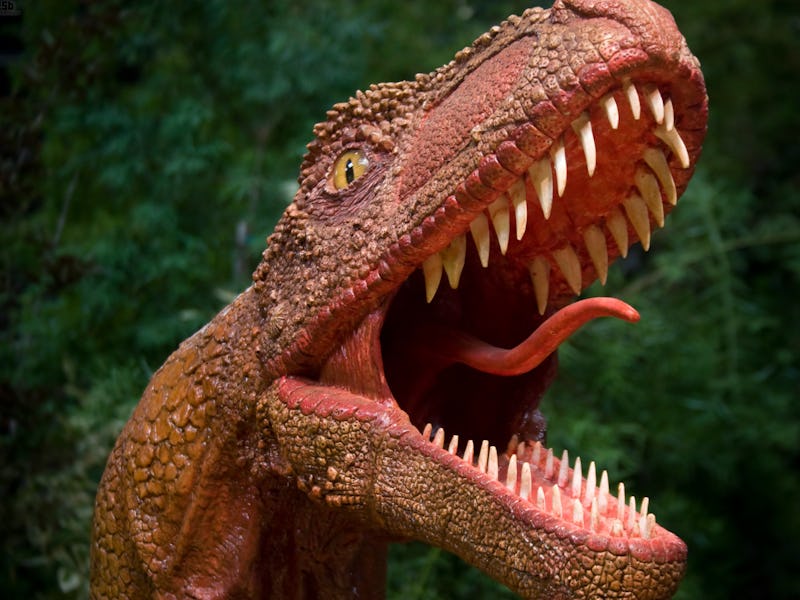The Unimaginably Violent World of Dinosaurs
"It's just chaos. Everything from three meters down is just destruction."

The age of the dinosaurs should properly be thought of as the age of baby dinosaurs, if you ask Mike Habib. Specifically, it’s the age of dead baby dinosaurs, and the site of the greatest baby animal massacre the world has ever seen.
“The Mesozoic is really full of vulnerable meatballs on legs, running around, trying to hide and eat enough to get to a size where you can’t kill them anymore,” he tells Inverse.
Habib is a professor at the University of Southern California and he studies the biomechanics of extinct animals, including the biggest that ever were. His current fieldwork involves titanosaurs — long-necked herbivore giants that could grow as big as a small adult blue whale. Here’s how he imagines life as one of the survivors of a decades-long baby titanosaur deathmatch:
You’re just walking along through the Cretaceous landscape. You’re this massive, 50-ton animal. You fear nothing. You’re scarred up from all the battles you survived when you were half grown, where something almost killed you but you managed to fight him off. You’ve got all these battle scars all over you. Now all you care about is food and sex, and nothing else matters. You can ignore the predators. You’re a monstrosity like they’ve never seen — they can’t touch you.
But around your ankles, unbeknownst to you, there is just a massacre, constantly, of tiny things running around, trying not to be destroyed, as every velociraptor for miles around is descending upon them, and pterosaurs drop out of the sky and grab them and swallow them whole. It’s just chaos. Everything from three meters down is just destruction. And then meanwhile, 10 meters away, up in the head of this enormous beast, you have no idea.
The reason that life was so different for a baby titanosaur compared to, say, a baby elephant, has to do with their life strategies. An elephant gives birth to a baby maybe once every two years, and it invests resources feeding and protecting it while it is vulnerable and young. A titanosaur lays 10-pound eggs. It can’t stick around for them to hatch, and even if it did, there’s not much a 50-ton beast could manage in terms of parenting something the size of a human newborn.
And so the titanosaur lays many eggs — maybe hundreds every year — such that by sheer numbers one or two might survive to reproduce themselves. The rest are doomed to a violent death at the teeth and claws of predators just dying for an easy meal. This probably explains how Cretaceous ecosystems supported such a diversity of large carnivores.
A recent study found that a titanosaur called rapetosaurus could balloon from eight pounds to 88 pounds in just six weeks. The body shape of the juvenile was a lot like that of the adult — a good sign that it fended for itself from birth.
We think of the world of the dinosaurs as one populated by huge, fully grown adults. We imagine a fight between a Tyrannosaurus rex and an adult triceratops, when that would have been the exception. Even a giant T. rex would have spent a good chunk of its life terrified and on the run. And who’d bother a five-ton beast with horns when there are unprotected babies literally everywhere?
If you’re wondering why we don’t see more baby dinosaur fossils, the answer is the same — they pretty much all got eaten. There are, of course, other reasons that the fossil record is biased towards the large, including that we tend to be looking for big bones when we go digging. We forget that the land before time was a lot younger, and a lot more murderous, than the one we call home.